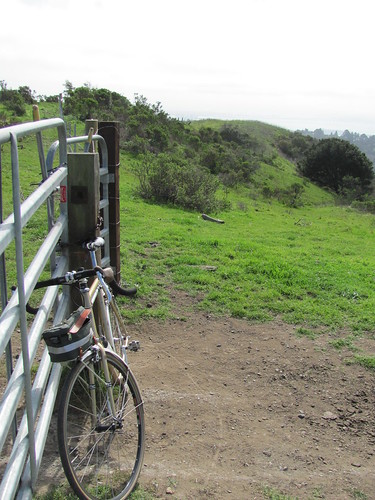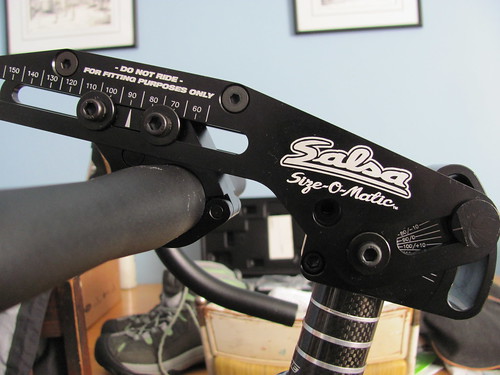
Well, almost halfway through March and I'm not keeping up with doing this everyday, but clarity continues and I think that doing this writing is essential for that, so I'm going to try to keep in the habit.
Recent changes: measured the latest setups on the Quickbeam and Casseroll , just to keep track. Installed MKS Touring Lite Pedals w/ Power Grips, same as the Quickbeam, on the Casseroll, for two main reasons: facilitate quick riding before and after work by removing the necessity for bike shoes, and to give more flexibility with regards to foot positioning on the pedals, after liking a more midfoot position on the Quickbeam, and feeling like the more forward cleat placement on my Sidi's makes me more unstable on the Casseroll.
The couple of short ride's I've taken on the Casseroll since installing the pedals (Marina rides) suggest that the newer foot position is good for balance, but the greater leg/torso angle has me feeling stretched out again, almost as much as I was before switching bars+stem for a shorter reach back in January. So, that's got me thinking. May try moving the bars back up the steerer tube some, after removing some spacers in a fit of creativity a few weeks ago. But, my experience is that bar height (within a certain range) has relatively little effect on effective reach--it is much more effected by horizontal reach, i.e. bar reach+stem reach+effective top tube length.
The measurements I took on monday are telling in this regard. For one thing, the straight-line distance measured from seat nose to top of bar clamp on the Casseroll stayed pretty much the same even with dropping the bars ~15mm or so. The steep head tube angle on the Casseroll probably contributes to this.

Secondly, measuring the Quickbeam (the bike I feel most comfortable on nowadays), and comparing it to the Casseroll numbers, shows why the reach feeling so different between the two bikes. Measuring to the stem clamp, things aren't that different. The Quickbeam, with 120mm stem, has a reach of 605mm. The Casseroll, with a 80mm stem, has a reach of 592mm. But now consider that in tandem with bar reach: the Quickbeam has a swept back bar, and a quick 'n dirty measurement puts the reach to the grip area at around 555mm. The Cowbell drop handlebars on the Casseroll have a reach of 70mm, so the minimum reach to one of the primary grip areas on that bar (the brake hoods) is something on the order of 592mm+70mm=662mm. That's more than 100mm of difference between the two primary hand positions. The Casseroll would need a 40mm stem (is that even possible with a 31.8mm bar clamp?) in order to even have the flats of its bars in the same place horizontally as the grips on the Quickbeam.

Or would it? I've largely neglected this line of thinking, but thinking physically, the less angled your back is, i.e. the more upright you are, the less setback you need in order to balance the portion of your weight that is forward of your hips. I think there are limits to this--even with a bolt upright position, there is still probably some setback that is needed in order to keep your legs and feet at a good angle, to keep from throwing your torso off balance. But theoretically, if I were to try to achieve a back angle closer to that on the Quickbeam on the Casseroll, some of the reach reduction could come from having less setback on the seat. This holds up in my measurements too--the Quickbeam measured out at 12.5cm of setback with a fairly standard (i.e., not a lot of built-in setback) while the Casseroll has something more like a 13.3cm with the SMP Dynamic, which has a lot more "effective" setback.
All of this is leading me towards some type of bike modeling software that allows rider modeling (hopefully taking into account body measurements) as well. Does BikeCAD do this?
No comments:
Post a Comment